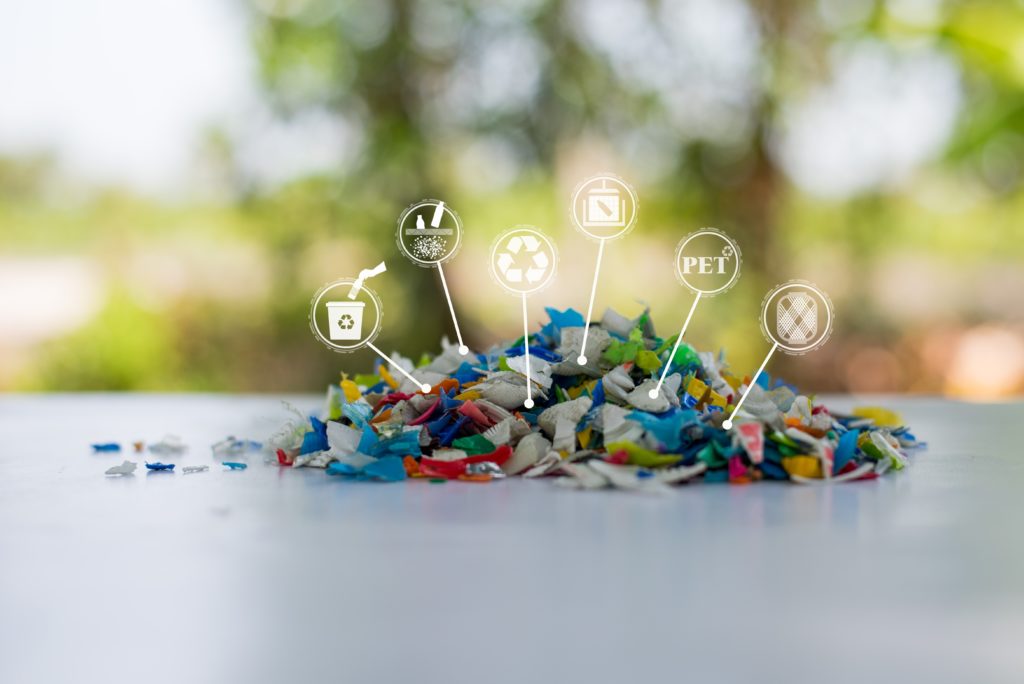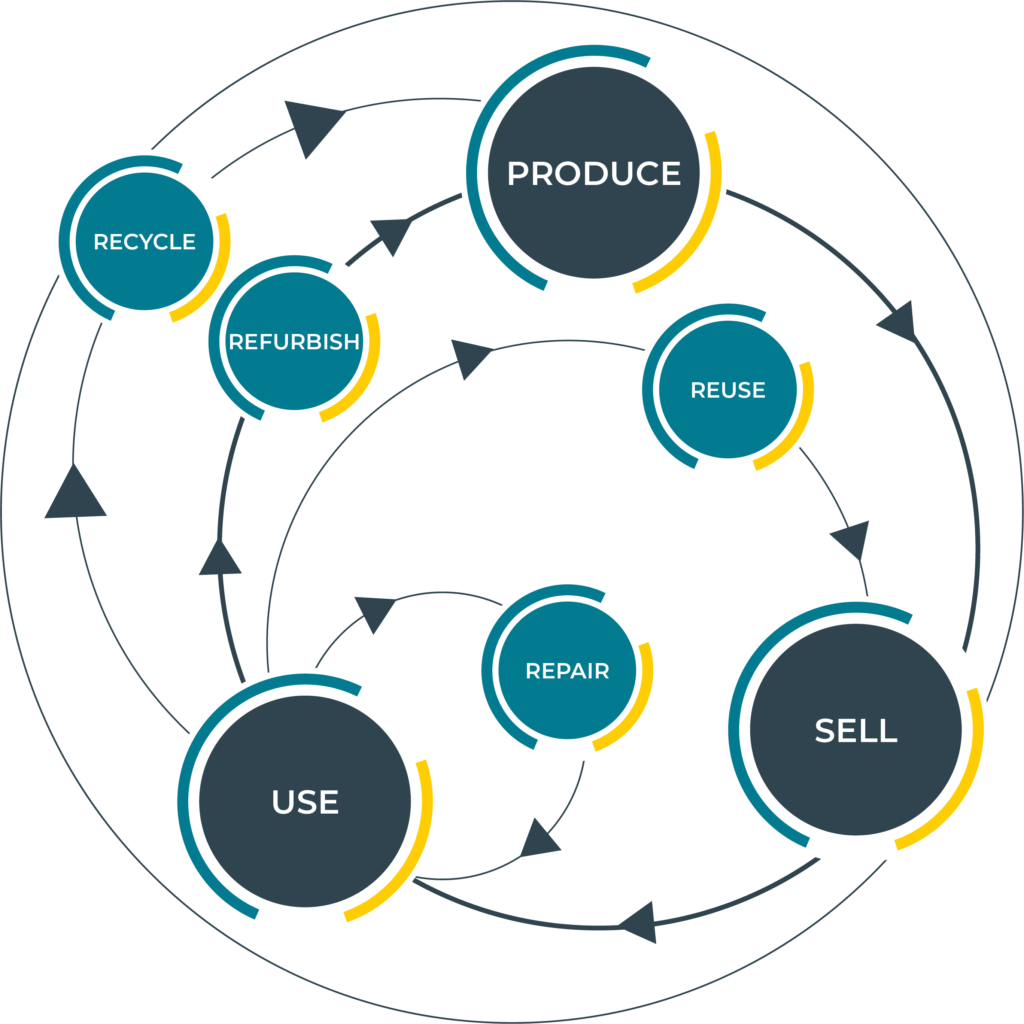Thriving in a circular economy
By Andrew McCaffery, Chief Strategy Officer
Few products have shaped the modern world more than plastics. It is incredible how they have worked their way into so many areas of life, having only existed in the most rudimentary form at the beginning of the 20th Century.
Now, plastics have become a source of enormous concern. The amount of plastic finding its way into the marine environment has created a public backlash against the material. Despite solving many environmental and social problems over the last decades, plastics have gone from a solution to a problem.
Plastics are lightweight, resource-efficient, shatterproof, hygienic, moisture resistant, and have barrier properties, protecting against microorganisms, moisture, humidity, gases and extreme temperatures: no other material today can match the functionality that plastic offers. However, many of plastic’s strengths can also be part of its weaknesses.

Counting the cost
Economics has powered the production of plastics. You only have to look at the comparative cost of production for the other materials. 170,00 people are employed in plastics, and five million tonnes of the stuff is used in the UK every year.
The industry is worth a staggering £25.5 billion; it’s the third largest manufacturing sector, bigger than the pharmaceutical, paper, nuclear, and steel industries combined and is the 10th largest sector in UK exports.
For something that is a sphere, our planet is becoming less and less circular each year. We are a long way from decoupling growth from consumption.

We often say we’re going around in circles like it’s a bad thing. But experience shows all things ebb and flow: the seasons, our energy levels, company performance, the global stock markets. The way business has traditionally operated has been less circular and more linear, focused on improving year on year – run in quarterly sprints and visualised by steep graphs (ideally upwards). But that’s not been working very well for our planet – or the people on it.
We are becoming less circular at a time when we need to accelerate circularity to support climate biodiversity and pollution action. We currently use the equivalent of 1.6 Earths’ resources a year. It takes the planet much longer to regenerate what we use in a year. That’s simply not sustainable.
The responsibility of tomorrow
One significant sign towards creating greater circularity is the proliferation of Extended Producer Responsibility frameworks. Governments across the world are stepping up to enact regulations with real teeth to support the overall systems we can invest in at scale.
It’s hard to think of a part of our lives that isn’t impacted by technology. It’s made our world more connected. Our work is easier to do. Limitless choice at our fingertips. But it’s also contributed to a society that consumes more resources than ever. We replace instead of repair. We upgrade instead of keep. We follow trends rather than embrace the timeless. We’ve taken for granted the natural systems we rely on to make it all happen. The impact we’re making on the planet is now happening at a faster rate than it can replenish itself. And we can’t afford to ignore it any longer.
A circular economy is a new system that is all about redesigning products, services and how our businesses work to eliminate waste, circulate products and materials, and regenerate nature. Less ‘take, make, waste’. More sharing, leasing, reusing, repairing, refurbishing and recycling – from recycling smartphones to renting your next outfit.
But fully transforming our current production and consumption models requires a huge mindset shift from individual behaviours to global collaboration between businesses and policymakers.
And it could be the technology that’s shaped our world today that now helps us save it. Every day we see new and exciting examples of how we can use technology to repair our planet. Social media is raising awareness of key environmental issues. Smart technology can reduce our energy consumption.
Circular practices make business sense and improve firms’ competitiveness and economies’ resilience. Everyone, from citizens to businesses, has to get on board with circularity to remain within the carrying capacity of our planet. Governments need to create the conditions for whole-of-government and whole-of-society engagement towards a just transition to circular economies.
The potential for circularity goes well beyond recycling and waste management to the heart of extraction and consumption of materials. Circularity is key to addressing the triple planetary challenges of biodiversity loss, pollution and climate. Governments and companies should adopt circularity within their core targets for these areas.

Technology that brings us together
Technology requires human communication to make data impactful. The key here is to make sense of data and intelligently explore or question findings. The most impactful work that a highly successful data analyst does comprises non-technical skills, including being able to construct the problem, understand the business context, ask the right questions, find creative solutions, create visualisations, and present the findings.
So, while many companies have amassed huge amounts of data and automated dashboards, they can ultimately be overwhelming.
Part of the problem is that data companies have long made a sharp distinction between data and insight – and promise to deliver the latter rather than the former. This has given the impression that insight should drop out of the sky in neat, multicoloured rows. They also think that the tools they buy should make it easy. Most don’t. Ecoview does.
We wanted to make data come alive in pre-built dashboards so that our customers can accelerate and make powerful changes to their business through their data. And now, anyone can click on their data and understand the big-picture, but at the same time, they can see how their data is created, managed, manipulated, stored, and—most importantly—how it’s used. You can manage the regulatory and reputational risks and use the data to prioritise the right environmental initiatives.
Successful implementation of data solutions to tackle climate change will be determined by how organisations can collect, analyse, manage, and act upon their data in a timely fashion. These new challenges will require the use of brand-new data sets which have never been analysed in this way or collected for this use. It is a tough ask for many.
It could be time to equip your business with the tools and strategies needed to thrive in the digital economy. Now is the right time to review how your business could transform its decisions and drive greater success.
Ecoveritas’ tailored solutions are designed to positively affect every part of your business, helping you quantify, identify, demonstrate and illustrate your contribution towards making the world a better place.























